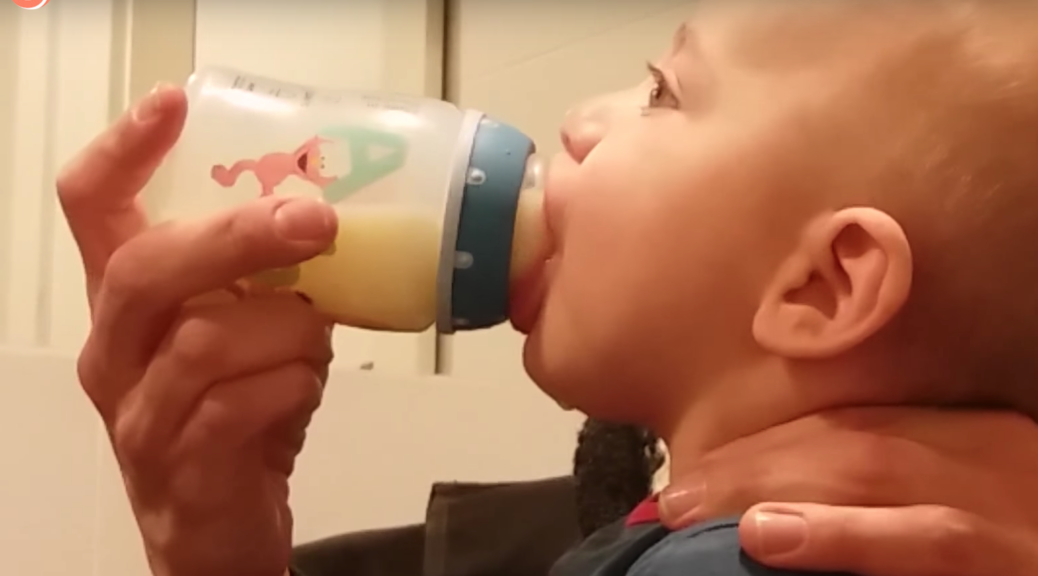
How to Give a Bottle the Baby-Led Way: Paced Bottle Feeding
When we think of giving a baby milk other than breastfeeding, the first thing that comes to mind is a bottle, but have you heard of paced bottle-feeding? The bottle as a method of feeding and its content, in the case of artificial formula, can interfere with your breastfeeding journey and cause difficulties. Your baby may end up rejecting the breast afterward. Even though nipple confusion is a controversial topic, we often see babies who have difficulty sucking at the breast after being fed from a bottle. So, if you want to introduce a bottle to give your baby expressed breastmilk or formula, it’s important to use the most baby-led way possible to try and minimize interference with breastfeeding, such as paced bottle-feeding. There are also other less interfering methods of feeding your breastmilk, donor milk, or formula to your baby, for example, the syringe-finger technique, cup feeding, or spoon feeding.
Why can bottle teats cause difficulties in breastfeeding?
Babies need to make a complex set of tongue movements to extract milk from the breast. Even so, they are prepared for this as they were born with the instinct to do so. It is sometimes said that it is simply easier for them to drink from a bottle than to breastfeed. But in reality, to get milk from the bottle, they have to learn to place their tongue in a completely different way. Some babies can drink from the breast and bottle alternating without difficulty, but many others get confused and show difficulty knowing what to do next when back at the breast. Many babies who are mixed-fed or get occasional top-ups may start to unlearn or forget what to do with their tongue, where to put it, and how to move it. So, they stopped doing the more complicated option between the two: breastfeeding.
The second difficulty they encounter is related to the speed of milk flow. Bottle-fed babies often drink more milk than they need, which can cause them to reject the breast when they are breastfeeding. At the breast, the amounts they get are smaller and take longer to flow because, at the bottle, babies get a lot of milk in a shorter time.
To give an exclusively breastfed baby a bottle is like a lottery; you can’t predict what will happen. Your baby might still feed at the breast again without problems or not. But if you have no other option or want to give your expressed breast milk, donor milk, or formula in a bottle, the safest way to do so is by using the so-called paced bottle feeding method. This way of giving a bottle allows the baby to feed milk in the most natural and baby-led way by respecting her pace, optimizing the amount she swallows, and placing the tongue in a way similar to the way she does at the breast.
So what is paced bottle-feeding?
For the paced bottle-feeding method, you need to:
- Give the bottle as horizontally as possible so the baby can take it slowly, like in our video below.
- Stimulate the search reflex by touching the cheeks, lips, and nose and put the whole teat into the baby’s mouth when you see it is wide open.
- It should be the child who controls the speed and amount of milk she wants to have.
- Allow 20-30 swallows, and then pull the bottle out quickly.
- Start the whole process again and make sure you are checking the baby’s signals of being full. This will tell you if she doesn’t want any more milk.
The benefits of using the paced bottle feeding method or baby-led bottle feeding are many:
- It minimizes the possibility of the baby experiencing nipple confusion.
- It allows the baby to maintain a correct suck-swallow-breath rhythm.
- The way the bottle is wakening the reflex, as well as the shape and texture of the teat, help the baby to maintain a more breast-like suction.
- The baby can regulate the amount of milk she drinks if you encourage a slow feeding rhythm; it allows your baby to manage hunger and the feeling of fullness better.
- It allows the adult to know better when their baby is full and therefore prevents overfeeding.
Watch our video below to see the paced bottle feeding method.